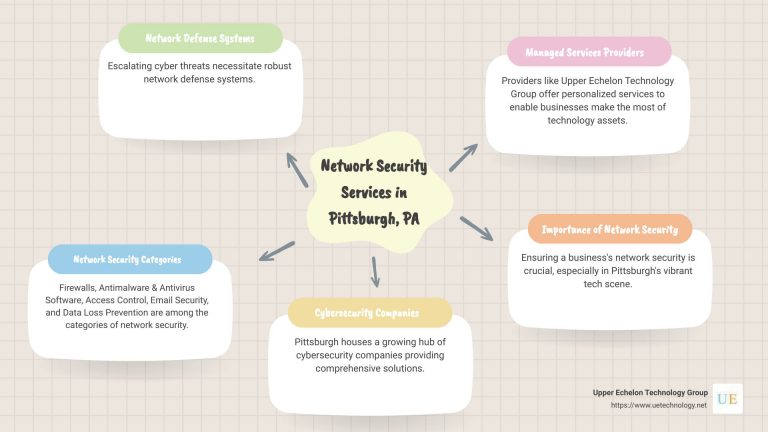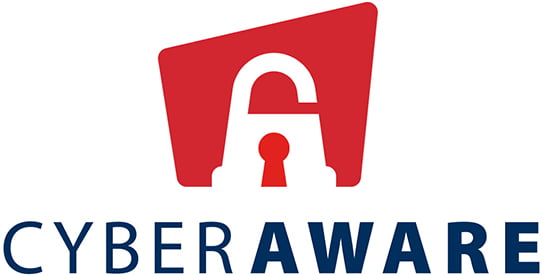Introduction
Are you concerned about the safety of your business’ digital assets? Small to medium-sized businesses like yours are under constant threat from cyberattacks. Disruptive events have the power to endanger your business operations and compromise the safety and confidentiality of your prized assets. A cyber security threat assessment process is your trusted ally against such adversities.
At Upper Echelon Technology Group, we understand your concerns. We are a cybersecurity-focused managed services provider. We prioritize personalized solutions aimed at solving your technology issues and enhancing your company’s overall efficiency and profitability through optimal use of technology.
Understanding the Importance of Cybersecurity Threat Assessment
A cybersecurity threat assessment process is an essential tool for identifying potential threats and vulnerabilities to your digital assets, particularly those involving sensitive data. Conducting a comprehensive threat assessment allows you to anticipate and effectively mitigate various forms of cybersecurity threats, before they escalate into full-blown attacks.
The Role of Cybersecurity Threat Assessment in Business Continuity
Implementing an effective cyber security threat assessment process directly contributes to maintaining the continuity of your business. It allows for:
- Protection: Ensuring the safety and confidentiality of your sensitive data.
- Resilience: Enhancing your ability to recover quickly from disruptive events.
- Compliance: Enabling you to meet industry regulations and standards to avoid penalties and loss of trust.
- Optimal Business Performance: Allowing your business to operate seamlessly, without interruptions due to cyber threats.
Combating cybersecurity threats requires a proactive approach. This guide will unpack the cyber security threat assessment process in detail, providing actionable steps that are critical to securing your digital assets and ensuring the continuity of your business. Together, we can make your business safer and more efficient. Let’s embark on this journey towards robust cybersecurity now.
The Concept of Cybersecurity Threat Assessment
Definition and Purpose of Cybersecurity Threat Assessment
A cybersecurity threat assessment is an integral part of a comprehensive cybersecurity strategy. It is a systematic process that identifies threats and risks to your organization’s digital assets, focusing particularly on those that can impact sensitive data. These threats can take various forms, ranging from direct attacks, such as ransomware campaigns, to human errors due to non-compliant practices or even system failures of IT security controls. Natural disasters outside of human control also pose significant threats to cybersecurity.
The primary purpose of a cybersecurity threat assessment is to predict potential security breaches before they occur and mitigate them proactively. Essentially, it is about staying one step ahead of the cybercriminals, protecting your business operations, and securing the integrity of your digital assets.
The Role of National Institute of Standards and Technology (NIST) in Cybersecurity Threat Assessment
The National Institute of Standards and Technology (NIST) plays a pivotal role in standardizing the cybersecurity threat assessment process. Their comprehensive guide for conducting risk assessments, known as SP 800-30, provides a framework that organizations across industries can follow to effectively assess cybersecurity threats.
NIST defines threats as any events or circumstances that can disrupt your normal business operations or compromise the integrity of assets across your organization. They also define vulnerabilities as gaps in security controls that can be exploited by threat sources. These definitions form the basis of the cybersecurity threat assessment process, enabling organizations to identify potential threats and vulnerabilities systematically.
NIST’s recommendations and strategies are designed to help organizations prepare for, conduct, and implement ongoing cybersecurity threat and risk assessments. By following the NIST guidelines, organizations can streamline their cybersecurity threat assessments and optimize them to their specific needs, ensuring a robust and effective cybersecurity strategy.
At Upper Echelon Technology Group, we fully adhere to the NIST guidelines in our cybersecurity threat assessment process. We understand the importance of staying abreast of the latest cybersecurity threats and trends, and we leverage our expertise to help you protect your digital assets effectively. We are here to partner with you in this critical process, providing personalized IT Managed Services that align with your unique business needs.
Step-by-Step Guide to Performing a Cybersecurity Threat Assessment
Protecting your business from cyber threats is not a one-time task, rather it’s an ongoing process that requires a strategic approach. Here, we’ll walk you through the step-by-step process of conducting a cybersecurity threat assessment.
Step 1: Defining Cybersecurity Threats
The first step in the cyber security threat assessment process is to define the potential cybersecurity threats your business could face. These threats could be anything from malicious attacks by hackers, malware, or even human error within your organization. Understanding these threats is crucial to devising effective strategies to combat them.
Step 2: Identifying Security Vulnerabilities
Once the potential threats are defined, the next step is to identify the vulnerabilities in your security systems that could be exploited. This could involve a detailed analysis of your IT infrastructure, software, hardware, and even personnel practices. Tools such as the National Institute for Standards and Technology (NIST) vulnerability database can provide valuable insights during this stage.
Step 3: Determining Threat Likelihood and Threat Impact
The third step involves determining the likelihood of a threat occurring and assessing the potential impact if it were to occur. This involves estimating the potential damage in terms of financial loss, disruption to operations, and reputational damage.
Step 4: Cataloging Information Assets
In this stage, you need to catalog all of your information assets. This includes hardware, software, data, networks, and people. By understanding what you have, you can better understand what you need to protect.
Step 5: Assessing the Risk
Assessing the risk involves evaluating the potential impact of each identified threat and vulnerability. This step involves a combination of qualitative and quantitative risk assessment methods to determine the overall risk level.
Step 6: Analyzing the Risk
After assessing the risks, you need to analyze them. This involves determining the overall impact of the risks on your business operations and objectives. It’s important to consider a range of factors including your organization’s risk tolerance, the effectiveness of existing controls, and the cost of potential mitigation strategies.
Step 7: Setting Security Controls
Based on the risk analysis, you should set appropriate security controls to manage the identified risks. These controls could be technical (such as firewalls or encryption), administrative (such as policies or procedures), or physical (such as locks or security cameras).
Step 8: Monitoring and Reviewing Effectiveness
The final step in the process is to continuously monitor and review the effectiveness of the security controls. This will help you to ensure that they are working as intended and to make adjustments as needed.
We at Upper Echelon Technology Group understand that cybersecurity threat assessment is an ongoing process. We are committed to helping you navigate this process, ensuring that your business is well-protected against the ever-evolving landscape of cyber threats.
Understanding the Sources of Cyber Threats
As part of the cyber security threat assessment process, it’s crucial to recognize and understand the various sources of cyber threats. These can range from direct attacks to human errors, system failures, and even natural disasters.
Direct Attacks and Their Impact on Cybersecurity
Direct attacks often come from hackers, malware, and organized cybercriminal groups. These adversaries seek to exploit vulnerabilities in your systems to breach security, cause harm, or steal sensitive data. Direct attacks can have disastrous consequences for your organization, leading to data breaches, operational disruptions, and significant financial losses. As such, it’s vital to regularly identify and patch vulnerabilities and monitor your systems for any signs of suspicious activity.
Human Errors as a Source of Cyber Threats
Human errors are another significant source of cyber threats. This can include employees inadvertently clicking on phishing links, misconfiguring security settings, or mishandling sensitive data. In fact, improperly configured S3 buckets can expose sensitive information to the public. Therefore, it’s essential to provide proper cybersecurity education and training to all employees and implement policies to minimize the risk of human error.
System Failures and Their Role in Cyber Threats
System failures, whether due to poor quality equipment or inadequate support, can also pose a cybersecurity risk. For instance, if your critical systems fail, it may not only disrupt your operations but also make your data more vulnerable to attacks. To prevent such scenarios, it’s crucial to use high-quality equipment and ensure reliable support for your critical systems.
Natural Disasters and Their Impact on Cybersecurity
Lastly, natural disasters like floods, hurricanes, and earthquakes can also pose a threat to your cybersecurity. These events can damage your physical servers, leading to data loss and operational downtime. Therefore, when deciding between on-premise and cloud-based servers, consider the potential impacts of natural disasters.
Understanding these sources of cyber threats is a critical step in the cybersecurity threat assessment process. It enables us to better prepare for and mitigate these threats, thereby enhancing the overall security of your organization. At Upper Echelon Technology Group, we strive to help you navigate these complexities, providing a personalized approach to IT Managed Services that focuses on your specific business needs and threats.
The Role of a Threat and Vulnerability Management Partner in Cybersecurity Threat Assessment
Cybersecurity threat assessment is a crucial aspect of your organization’s security posture. However, it can be a complex process involving the identification of threats, vulnerabilities, and potential impacts. That’s where the role of a threat and vulnerability management partner comes in. They bring expertise and resources to help you navigate this process effectively and efficiently.
Benefits of Working with a Threat and Vulnerability Management Partner
Working with a threat and vulnerability management partner offers several advantages:
-
Expertise: Partners bring a wealth of experience and knowledge in identifying and managing cybersecurity threats. They are well-versed in the latest threat scenarios and can help you anticipate and prepare for potential attacks.
-
Resource optimization: Instead of spending time and resources trying to navigate the complexities of cybersecurity threat assessment, you can focus on your core business operations while your partner handles your cybersecurity needs.
-
Proactive approach: A threat and vulnerability management partner can help you move from a reactive to a proactive approach, anticipating threats before they occur and implementing preventive measures.
-
Compliance: With their knowledge of various regulatory requirements, these partners can ensure your cybersecurity practices are compliant with relevant laws and standards.
-
Continuous monitoring and improvement: Your partner will not only conduct an initial assessment, but also continuously monitor your cybersecurity infrastructure for new threats and vulnerabilities, ensuring that your security posture remains strong over time.
How Upper Echelon Technology Group LLC Can Help in Cybersecurity Threat Assessment
At Upper Echelon Technology Group, we specialize in providing a personalized approach to IT Managed Services, focusing on your specific business needs and threats. Our cybersecurity threat assessment process is robust and comprehensive, designed to help protect your assets and keep your business safe.
We start by identifying potential cybersecurity threats and vulnerabilities, assessing their likelihood and potential impact. This involves evaluating the intent and capabilities of potential cybercriminals, as well as the possible targets within your organization.
We then develop a tailored strategy for managing these threats, including implementing appropriate security controls and measures. Our team continuously monitors your cybersecurity infrastructure, identifying and addressing new threats as they emerge.
Additionally, we provide guidance on best practices for managing cybersecurity threats, helping you enhance your security posture. Our approach is not just about fixing tech issues; it’s about leveraging your technology assets in the best way possible to help your business.
At Upper Echelon Technology Group, we believe in building a business relationship based on value. If you’re a company that values proactive, personalized, and efficient cybersecurity threat management, we would love to have a conversation with you.
Cybersecurity is not a one-time event, but a continuous process. With Upper Echelon Technology Group as your threat and vulnerability management partner, you can rest assured that your cybersecurity needs are in good hands.
Developing a Framework for Conducting Cybersecurity Threat Assessments
Creating a methodical approach to the cyber security threat assessment process is crucial for effective defense against cyber threats. With a comprehensive and consistent framework, you’ll have a systematic way to identify, assess, and respond to various security risks.
Importance of a Framework in Cybersecurity Threat Assessment
A well-planned framework forms the foundation of a successful cybersecurity threat assessment. It not only allows for a structured approach to risk identification and evaluation but also helps in determining the most effective risk mitigation strategies.
The importance of having a framework for conducting cybersecurity threat assessments cannot be overstated. Here’s why:
- Consistency: A standardized framework ensures that all cybersecurity threats are addressed consistently, reducing the chances of missing or overlooking potential risks.
- Efficiency: With a clear process in place, you can efficiently conduct threat assessments, saving time, and resources.
- Compliance: A robust framework can help ensure that your organization meets industry standards and regulatory compliance requirements.
- Risk Management: By identifying and prioritizing threats, a framework guides the development of proactive strategies to manage and mitigate risks.
- Business Continuity: With a solid security posture, your business can better avoid disruptions caused by cyber attacks, ensuring smooth operation.
Key Elements of a Cybersecurity Threat Assessment Framework
Creating a cybersecurity threat assessment framework involves several key steps. The goal is to establish a system that identifies potential threats, assesses their impact, and develops a plan to manage those risks. Here are the main components to consider when developing your framework:
- Threat Identification: Identify and categorize potential cybersecurity threats that could impact your business operations.
- Vulnerability Assessment: Analyze your IT infrastructure to identify security vulnerabilities that could be exploited by threats.
- Risk Assessment: Evaluate the potential impact and likelihood of each identified threat exploiting the vulnerabilities.
- Risk Management: Develop strategies to manage, mitigate, or accept the identified risks based on your organization’s risk appetite.
- Monitoring and Review: Implement a system for ongoing monitoring of threats and vulnerabilities, and regularly review and update your risk management strategies.
At Upper Echelon Technology Group, we have extensive experience in developing and optimizing cybersecurity threat assessment frameworks. We understand that each organization has unique security needs, and we use our expertise to create a customized framework that fits your business. Contact us today to learn how we can help you protect your business from cyber threats.
Conclusion
Recap of the Cybersecurity Threat Assessment Process
Throughout this guide, we’ve laid out the key steps involved in the cyber security threat assessment process. This process begins with understanding and defining the potential threats that might impact your digital assets. Next, we looked at the need to identify security vulnerabilities that could potentially be exploited by these threats.
We then emphasized the importance of assessing the likelihood of these threats, followed by cataloging your information assets to ascertain what’s at risk. This leads to the crucial steps of assessing and analyzing the risk, which provide the basis for setting security controls that can mitigate these risks.
Finally, we discussed the need to monitor and review the effectiveness of these controls, ensuring they remain up-to-date and able to combat emerging threats.
The Future of Cybersecurity Threat Assessment
As we look ahead, the future of cybersecurity threat assessment is poised to become even more critical. Cyber threats are continually evolving, becoming more sophisticated and harder to predict. Consequently, a proactive and dynamic approach to cybersecurity is no longer an option; it’s a necessity.
At Upper Echelon Technology Group, we’re committed to staying ahead of these changes. We understand that as cyber threats evolve, so too must our strategies for identifying and combating them. Our team is dedicated to constantly updating our knowledge and refining our threat assessment processes to provide the most comprehensive protection for your digital assets.
Moreover, we believe that the future of cybersecurity lies in personalized, business-centered solutions. We’re not just about fixing tech issues; we’re about understanding your business needs and leveraging technology to improve your bottom line.
As technology continues to permeate every aspect of our lives, cybersecurity becomes a business issue, not just an IT problem. That’s why we’re here to help you navigate the complexities of cybersecurity risk assessment and provide you with the tools you need to secure your digital future.
We invite you to explore our cybersecurity services and contact us to learn more about how we can support your business in its cybersecurity efforts. We’re here to help protect your digital assets, so you can focus on what you do best – running your business.







